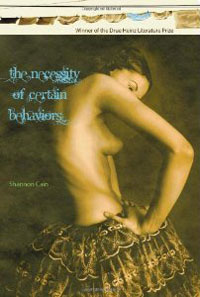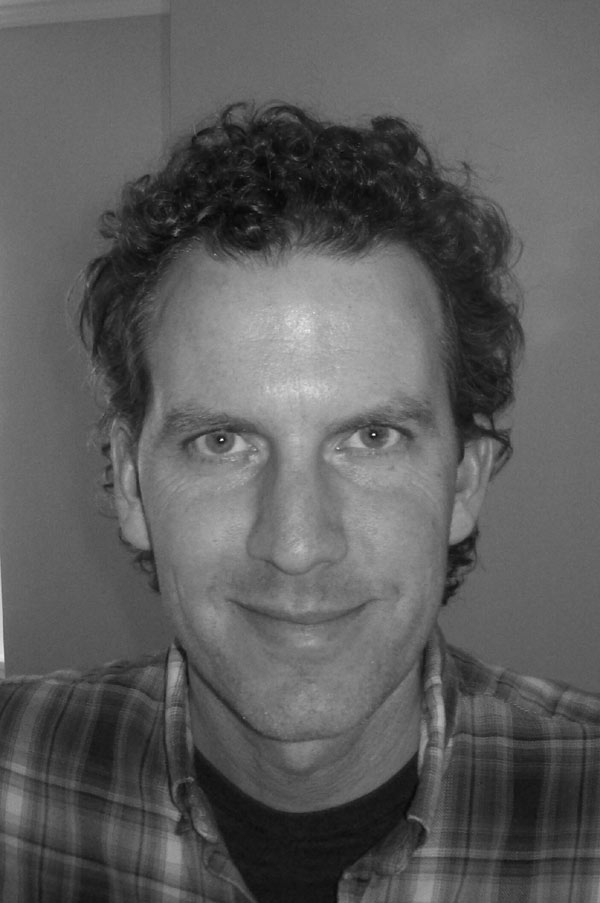Street-Side, Bedside, Broadside: An Interview With Shannon Cain
 The Necessity of Certain Behaviors
The Necessity of Certain Behaviors
by Shannon Cain
University of Pittsburgh Press, 2011
160 pages / $24.95 Buy from Amazon
Stories in Shannon Cain’s The Necessity of Certain Behaviors pair exhibitionist events and their three-ring tableaus with characters who typify “marginal,” yet who nonetheless surprisingly assert not only their outsider status, often in correlation with their sexualities, but also their complexities—a young lesbian ventures to the set of The Price is Right to meet her father, Bob Barker, only to find not parental but sexual identities challenged; a mayor’s wife endures the scandalizing of her sexuality after she is caught masturbating in the YMCA’s shower room, only to find that her new relegation to sexual deviant has allowed her singular insight into victims of the myriad sexual minefields in her community—the cumulative effect of these stories also achieves a reversal: common notions of taboo or freakishness gain warmth and humanity, while the normative culture unveils its crippling deformities. Cultural critique couldn’t have a more compelling and sophisticated face. In an era often favoring equivocation as a substitute for vision, this collection is clear: take a stand, make it compassionate. Others agree, of interest to note: American Literary Review, American Short Fiction, Colorado Review, Massachusetts Review, Southwards, Tin House, The O. Henry and Pushcart Prizes, the National Endowment for the Arts, and The Drue Heinz Literature Prize.
January 20th, 2012 / 12:00 pm
Time Traveling with Josh Russell: An Interview
The risk, lyricism, and page-turning plot of Josh Russell’s Yellow Jack appear again with maturity and elegance in his second novel of historical fiction, My Bright Midnight. How? Why? With what nerve? Josh Russell, recipient of a National Endowment for the Arts Literature Fellowship and Co-Director of Georgia State University’s Creative Writing Program, reveals a secret or two.
 Q: Aimee Bender wrote, “Everything a human experiences happens on the body. That’s enough setting for me.” Your protagonist Walter is very self-consciously embodied after leaving Germany and experiencing life in 1930’s and 40’s New Orleans, which you imbue with its own highly sensual body. Would you discuss the way the settings (or bodies) worked together in your process of writing the novel?
Q: Aimee Bender wrote, “Everything a human experiences happens on the body. That’s enough setting for me.” Your protagonist Walter is very self-consciously embodied after leaving Germany and experiencing life in 1930’s and 40’s New Orleans, which you imbue with its own highly sensual body. Would you discuss the way the settings (or bodies) worked together in your process of writing the novel?
A: A few days ago I was commiserating with a friend about commuting and how we both missed being able to walk to work, and I was amused and amazed to realize how related writing and walking are for me. I wrote Yellow Jack while walking during two years of lunch hours when I was working as a help desk dispatcher: Walk a few yards along the path beside Boulder Creek, stop, write a sentence in my notebook. Walk a few more yards, stop, write two sentences. I would have had a lot less to write about had I not spent so much time walking to and from work when I lived in New Orleans a few years before I began even thinking about Yellow Jack. My Bright Midnight comes in large part from my second, longer, residence in New Orleans, during which I regularly walked the twenty-odd blocks of Magazine Street between my house and Tulane University, where I was working, stopping to buy pain raisin at the neighborhood boulangerie, cafe au lait at the coffee shop, and blood oranges at Whole Foods (it’s amazing to recall that this did not seem in the least pretentious). Obviously the New Orleans landscape is an important part of both books. As for how settings and bodies worked in my process of writing My Bright Midnight, when I choose to write something with an historical setting, I do so in part because of the challenges of avoiding clichés about the past, and one strategy I employ to answer those challenges is to make sure that the characters’ interiors and exteriors are never lazily constructed.
November 2nd, 2010 / 11:43 am
